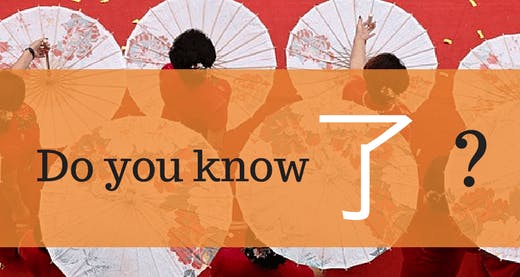If you think Chinese is tough, you are not alone. The grammar, not to mention the characters and pronunciation, can be dizzying! To make Chinese just a little less intimidating, here we detail some of the more common usages of the character 了.
1. Perfective Aspect
2. Sentence 了 (Modal)
3. Sentence 了 + Perfective Aspect
4. Intensifier
5. Liǎo
1. Perfective Aspect
This usage indicates that an action of the sentence is complete.
Careful—this does not mark the past tense. This is called the “verb aspect” and we will dedicate another post to this later. Here are a couple of examples:
昨天我跑步了。
Zuótiān wǒ pǎobù le.
I went running yesterday.
我吃饭了。
Wǒ chīfàn le.
I ate.

2. Sentence 了 (Modal)
Here, the particle appears at the end of a sentence and marks a change of state. This change could be in the understanding, opinion, ideas, actions, weather, etc.
In English, we could translate the particle as “now” or “anymore”.
For example:
她会走路了。
Tā huì zǒulù le.
She can walk now.
我不喝酒了。
Wǒ bù hējiǔ le.
I don’t drink anymore.
It can also indicate that a change is about to occur. Look for these structures:
- 要 (yào) + VERB + 了
- 快 (kuài) + VERB + 了
- 就要 (jiù yào) + VERB + 了
- 快要 (kuài yào) + VERB +了
For example:
快要下雨了。
Kuài yào xià yǔ le.
It’s about to rain.

3. Sentence 了 + Perfective Aspect
When these two are combined, you are expressing what has been completed until now. This often manifests as sentences describing duration.
他已经吃了三十个饺子了!
Tā yǐjīng chīle sānshí gè jiaozi le!
He has eaten 30 dumplings!
(The implication here is that he may continue to eat dumplings.)
他当老师当了五年了。
Tā dāng lǎoshī dāngle wǔ nián le.
He has been a teacher for five years.
(And here you can assume he will continue to be a teacher.)
This usage can be tricky—sometimes these two “overlap” each other at the end of a sentence as one.
For example:
我毕业三年了。
Wǒ bìyè sān nián le.
I graduated three years ago

4. Intensifier
The purpose of the article here is to emphasize the adjective it is used with. Here are some of the most common structures:
- 太 (tài ) + ADJECTIVE + 了
- ADJECTIVE + 极 (jí) + 了
- ADJECTIVE + 死 (sǐ) + 了
- 可 (kě) + ADJECTIVE + 了
For example:
太好了!
Tài hǎo le!
Great!
饿死了!
È sǐ le!
(I’m) starving!
A helpful trick is to view these as fixed vocabulary items.

5. Liǎo
This is a verb complement. (More to come on verb complements in another post!)
Liǎo indicates whether the verb was successful. For example:
我做得了。
Wǒ zuò déliǎo.
I can do it.
我做不了。
Wǒ zuò bùliǎo.
I can’t do it.
As le and liǎo share the same character, we thought it merited inclusion. We won’t go into too much detail for this one though.
***This is a guest post by Culture Yard Language School.
These are just some examples of how to use 了. Still, there are many more usages not covered here–which is both the beautiful and challenging part of learning Chinese!
Culture Yard Language School is an award-winning Chinese language school and cultural center that helps you learn Mandarin fast and efficiently. The language school was founded in 2009 and is located in the heart of old Beijing in China.
Choose from Culture Yard’s programs such as the HSK, Survival, Part-time and Intensive Chinese and get in touch with China Admissions to start your application. We have highly trained student counselors who will assist and guide you through the application process.
- 5 Tips to Get a Scholarship in China this 2024? - February 15, 2024
- 3 Steps to a Great Personal Statement for a Chinese University 2024 - February 12, 2024
- 8 Apps To Learn Chinese Online For FREE in 2024 - January 31, 2024
